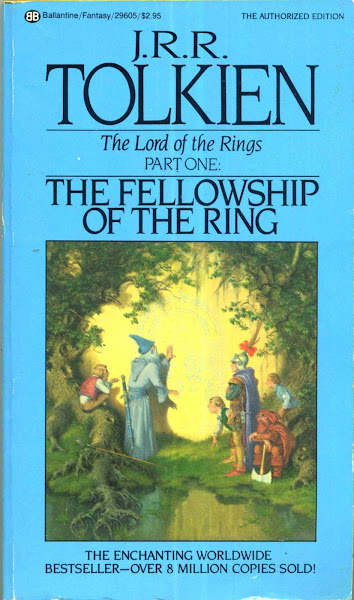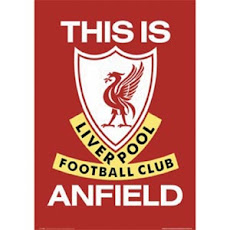 |
| We expected at least third place but third runner-up isn't so bad given the circumstances. And the club takes home Php 337,226! Not bad at all. We should be thankful. |
Understanding what happened
to the Loyola Meralco Sparks’ 2012 Singapore Cup adventure
by rick olivares
“This
is a big learning experience for us but maybe I will see the big picture of it
in a few days but right now, I’m very disappointed.”
Phil Younghusband made that statement
following the 4-0 thrashing of the Loyola Meralco Sparks by Gombak United in
the battle for third place in the 2012 Singapore Cup at the Jalan Besar Stadium
last Sunday evening.
Loyola kicked off its Singapore Cup
campaign with an incredible 2-1 over Singapore side Geylang United to advance
to the quarterfinals where they defeated Burmese side Kanbawza, 5-3, in
aggregate. The pair of stunning wins easily tabbed the Philippine club as the sensation
of the tournament. Once in the semifinals, their ran out of luck as Tampines
Rovers taught Loyola a lesson strategy and conditioning en route to a 5-0
aggregate win. The battle for third place against a young Gombak side promised
silverware. Instead, the club ended the tournament with a whimper much to the
disbelief of the staunch Philippine crowd that saw them through four legs and
the officials of the Singapore league who expected a thrilling match and not a
pitiful performance.
In the aftermath of the Tampines loss,
Sparks assistant coach Vincent Santos asked me if I could help write something
that will put things in perspective for those in management and the team’s
sponsors who could not see past the final result. It took me a couple of weeks
(mostly because I have been taken ill) but this is what I hope to be an
unbiased and objective discourse on Loyola’s Singapore adventure and that the
clubs that follow their trail may learn from it.
This is not making excuses for the
losses because the opposing squads really won it on their own merit. These are
some factors that also contributed to the loss. Clearly, for the entire surge
in popularity in football, ours is a young footballing nation where we are
finally beginning to learn the right way.
A
team must be on-ground for at least 48 hours before a match abroad
There is a reason why FIFA mandates
that the latest a club can release a player for national duty is two days
before. Even in tournaments like the Suzuki Cup, teams have a two-day interval
between matches. It is not ideal as the best would be a several days but this
will do for a short tournament. It is primarily used for recovery because a
90-minute hard match is hard on one’s body.
If you recall in April of 2010, there was concern about the 20-hour bus ride by Barcelona to Milan due to the explosion of Eyjafjallajokull volcano. Once they got there, they got waxed 3-1 by Intermilan in a Champions League match (Barca got bounced from the competition as they lost 3-2 on aggregate). Again, there was hardly any recovery for the La Liga club.
If you recall in April of 2010, there was concern about the 20-hour bus ride by Barcelona to Milan due to the explosion of Eyjafjallajokull volcano. Once they got there, they got waxed 3-1 by Intermilan in a Champions League match (Barca got bounced from the competition as they lost 3-2 on aggregate). Again, there was hardly any recovery for the La Liga club.
If you look to the recent history of
the Sparks, James and Phil Younghusband were told by the Philippine Football
Federation that flying in with a day before the Bahrain match would not be of
any help to them or the national team so the earliest they could see a return
to action was against Kuwait. A long and transcontinental flight doesn’t really
help even if one sleeps throughout the flight.
Singapore is a little over three hours
away so why did this trip hurt? Because it was a red eye flight. Loyola was
supposed to have a match on Thursday night against Mendiola but it was
postponed due to the weather. The Thursday match meant that the team could not
fly out to Singapore earlier. And the team can only be thankful they did not have to play Thursday night because how much worse could they be if there were even less time for recovery?
The only available flight for the team
was on a late Friday evening. The team left Friday night in two batches, the first at
around close to 9pm while the second left at 1030pm. The first batch arrived at the hotel
around 1am while the second checked in at 3am.
Furthermore, practice was scheduled by the S. League from 7-9pm on Saturday evening. By the
time the team got back to the hotel, it was around 930pm.
Sunday, match day, it was obvious in
the morning that there was some fatigue that set in. Many players got up around
11am. We arrived at the Jalan Besar Stadium a few minutes before 4pm, a little later than desired because ideally, you are at the venue two hours before for proper limbering and simply getting ready for the match.
By kickoff at 5:15pm, the team appeared sluggish
and they paid for it as Gombak scored twice early. The team never got its
bearings until the half and by then, it was already a mountain to climb.
The
odds are stacked against a semi-pro team beating a pro team
The United Football League is a
semi-professional league. Let’s get that out of the way. That means that teams
are not full-time professionals. Some players because of their wages are close
to it but not for the vast majority. Looking at the make-up of the Loyola
Meralco Sparks, many of the players have day or in the case of defenders Alex
Elnar and PJ Fadrigalan, night jobs. When these “employed” players go abroad,
they have to file for leaves. Imagine filing leaves for football and not for a vacation.
In Loyola’s recent match against
Pachanga, Fadrigalan had to leave at halftime for work. It is the same thing
with the others. During the first leg against Geylang, Jayson Cutamora arrived
on match day. Against Tampines, defender and co-captain Pat Ozaeta also arrived
late.
Pro clubs train on a regular basis
because that is their life. Semi-pro teams try their best to do so but it is
difficult.
There is a massive difference when one
lives and breathes football as opposed to a life where one has to totally shift
one’s mindset from an eight-hour workday to a football match to be played two
hours later.
S. League teams all have homefields
where they have facilities for training any time they wish too. That is another
advantage.
While the Philippines has finally
begun to understand the need for all-weather pitches, we are still miles away
from our Southeast Asian neighbors. But think how far we’ve come with only so
much. How much more when we’ve got everything down pat?
You
gotta be fit to be the king
Match fitness and conditioning are
just as important to any team’s chances of winning.
When Loyola played Tampines in the
Singapore Cup semifinals, the Stags were winding up a long season. Loyola on
the other hand, was just getting started for the new one. One team was in peak
form while the other was trying to find its legs.
Advantage Tampines. And what an
advantage that was.
Usually Philippine club teams only
play in one tournament at a time. Loyola was playing in both the UFL (the
tail-end of the last season) and the Singapore Cup. Teams have to get used to
that.
If you look at say Manchester United,
they have been criticized for not taking other tournaments outside the Premier
League and Champions League seriously. That is why they have a huge roster to
be able to utilize the reserves for other tournaments. Team are celebrated for
winning the domestic title and in Europe.
Because of the Loyola stint in
Singapore and other regional tournaments, UFL teams now have to look long term
on planning and playing for more than one tourney at a time.
In order to do that, aside from the
composition of squads, one has to consider fitness and conditioning. And aside
from that, there are the home conditions that usually favor the home team.
When the Philippine Men’s National
Team played Kuwait in the opening round of the Asian Qualifiers for the 2012
World Cup, the nationals were literally sweating buckets in the desert heat.
That is why the team camped out in Bahrain to acclimatize. But is it enough?
Not at all but it is better than arriving there with only two days to spare.
The same thing befell the Philippines
when it played Mongolia in the away match for the AFC Challenge Cup, after a
while, the players couldn’t move. The weather got to them.
Having said that, Singapore is a
tropical country much like ours. But theirs is closer to the equator, hence, it
is even hotter. Now in Southeast Asia, there are two seasons – hot and wet.
In the days leading up to match day,
Singapore was inundated with rains. However, Sunday, was hot and humid. I
didn’t mind the heat as I had the chills due to a bout of the flu. I welcome
the beads of sweat that lined the back of my shirt outside the stadium. But to
my Filipino friends who reside in Singapore, they just wanted to get inside the
cooler confines of the stadium.
Against Geylang the humidity and the
hard artificial turf were a huge factor. Players were collapsing due to cramps
yet the valiant stand and win makes this one of the most memorable wins in the
team’s history.
It was clear even against teams like
Kanbawza that Loyola faded in the second half. The other wideouts of opposing
teams looked like thoroughbred horses racing down towards the finish line once
they got the ball on the flanks.
Tampines hardly even went to their
bench and that showed how fit and superbly conditioned they were.
Tampines and Gombak played their best
games of the season both against Loyola (that Singaporean media will attest to
that). A Singaporean colleague remarked that the Stags’ goalkeeper Sasa Dreven
looked all-world against the Sparks when he was so inconsistent throughout the
season.
Gombak has slid from sixth to ninth
place. There is a young team. The Bulls lost over eight players from the
previous season due to financial woes. There was a late season turnaround for
them as they went to a youth movement. In a post-match conversation with Gombak
coach K Balagumaran, he said that they playing for third place was huge not
just for his team but for his players because there is the possibility that
they will move to other and bigger clubs in the off-season. Translated, that
means, this too, was their audition for the other clubs. Doesn’t that remind
you of that Middle Eastern club that recently played the Azkals where the
players who went in were auditioning for the club?
Nevertheless, even if the Stags were
putting their best foot forward for a big payday, they had a veteran backline
that they trusted to repulse Loyola’s attacks. They hoped to be aggressive as
they stole a page from Tampines by being aggressive early and not let Loyola get
their passing game going. They were surprised by the slow and sluggish start.
In fact, Balagumaran opined that the heat might have been a factor.
At breakfast this Monday morning,
right before we left for Changi to return to Manila, I asked Loyola coaches
Dang Pedro and Gil Talavera about plyometrics since the Sparks players lacked
explosiveness on the run. It is something that because of their semi-pro nature
they hope the players will find the time to do on their own. If that is so that
is not going to happen because for one, plyometrics training is expensive and
should be done in the off-season and not during the season.
Unlike the evergreen Aleks Duric who
has learned to pick his spots on offense, Gombak’s Mustaqim Manzur, Iqbal
Hussain, and Fairoz Hassan were explosive on the release. Watching them from
the media tribune of the Jalan Besar Stadium, it was like watching Usain Bolt
leave his competition behind. There was that burst of speed and energy that
left players like Alex Elnar and Chad Gould behind.
And it is no surprise that teams like
Air Force and Global utilize their speed advantage to the hilt against Loyola.
Pro teams train twice a day. There’s
the weight training and the proper field practice. I asked Aleks Duric about
this and he said aside from paying attention to what he eats, he runs and runs.
Ditto with his teammates.
Is running enough? Maybe. Maybe not.
But on the average, a footballer runs an average of five miles per game. The
midfielders and forwards, depending on their game plan, run anywhere from five
to 11 miles. This was something that was discussed by Loyola in the pre-game
talk.
Unfortunately, it was Gombak that got
out of the gates like a Seabiscuit.
And
there’s the question of tactics
Loyola usually runs a 4-2-3-1
formation, the vogue formation run by Paris Saint Germain, Ajax Amsterdam,
Borussia Dortmund, Zenit St. Petersburg, and Spain. Barcelona occasionally
leaves its cherished 3-4-3 for the 4-2-3-1.
It
is hard to say that any one formation is the best. I will always say that it
boils down to having the right players to execute a formation.
The formation has to be run in
practice and not discussed only in pre-game briefings. To assume that everyone
can run the formation will fall prey to Norman Schwarzkopf’s famous line about
assumption being the mother of all fuckups.
Against Tampines, a 4-1-4-1 was run
without having the midfielders and forwards practice how to move in sync. That
was disastrous. The 4-2-3-1 is a terrific defensive and offensive scheme because
it offers layers of defense and offense…. providing the team moves as a unit.
The problem is if the spacing isn’t
correct and players tend to clog the midfield (as it happened against Gombak),
there isn’t enough defense on the wing. That is how Gombak, running the
conventional 4-4-2, made Loyola pay as their wingers Julien Durand and Mustaqim
Manzur ran up and down the flanks (usually the left) with abandon.
The substitution of Mark Hartmann in
the middle of the first half was crucial. The coaching staff might say that he
wasn’t able to get the job done but that is an awful too early to make that
sub. I thought it was the defense that got eaten alive by one man. That
substitution gave the team one less weapon and Hartmann was huge against
Geylang and Kanbawza. With Phil Younghusband shackled, Loyola needed scoring.
Obviously, the opponents tried to shackle the Younghusband brothers and they
did so quite successfully.
I understand that in Korea, players
are made to learn the different positions but the thing is, again if I may
emphasize it, if not practiced with the team, that is not going to help.
Case in point, Anto Gonzales was
pulled out for Kim Woo Chul who usually starts at centerback. But in a more
attacking midfield position, he was not able to complete any passes to his
teammates making it even more exasperating for the offense.
When Loyola gets it right (see the
recent match against Nomads), their play is a wonder to behold. But when the
midfield play is sour then it’s going to be a long and frustrating match for
the Sparks.
And if Loyola doesn’t score early,
they struggle for second half goals because teams figure out how to play them. They
have shown a capability for halftime adjustments, they just need to be more
consistent.
Everyone
should learn from this
The whole Singapore Cup can still be
summed up as a successful one for Loyola. After all, who knew they’d go that
far? They made a case not just for themselves but the upswing of the UFL and
Philippine football.
Up in the media tribune of the Jalan
Besar Stadium and in the post-match press conference, my Singaporean
colleagues, not to mention Gombak coach K Balagumaran all expressed that “this
is not the Loyola they have seen.” If you ask me that is the best compliment
that can be said about this Philippine club team. That is a sign of respect won
at a hard and telling cost. And if the players and coaches – and I do know you
are reading this – noticed, you gained many Singaporean fans.
And I do hope people understand that
there are many factors that affect a match. I tried my best to outline them and
explain them although there are some that are better left unsaid for now. But
there are lessons to be learned from scheduling, to recovery, to fitness and
conditioning, and to practicing what one preaches. These are but some of the
ingredients for a successful football team.
The 2012 Singapore Cup was ultimately
a great learning experience for the Loyola Meralco Sparks although as Phil
said, it left a bittersweet taste in the end.
-------------------
I am extremely thankful to Loyola and the UFL for this opportunity to be with the Sparks in this incredible journey. To see everything up close is something that a journalist like me lives for. I tried to write about this as accurately and honestly as possible. It reminded me of those days when I would cover the Philippine Men's Football National Team under Aris Caslib all the way to Simon McMenemy.
I want to thank Randy Roxas, Woowee Evangelista, Belay Fernando, Kim Chul So, Vince Santos, Gil Talavera, Dang Cecilio, Doods Lansang, Belle Nayve, Mike Yamamoto, Reza Regacho, Louie Potenciano, and the entire team. The UFL's Javy Mantecon and Coco Torre for allowing me to continue what I started. My friends in Singapore: Fab Chen, Gabe Tan, Ken Tan, Gary Koh, Paul Greenrover Goodwin, and Ian Griffith. And from the S. League -- Sobban and Glenn. And there's Putrashah and Kumar! You guys made it fun too. Monark & Noreen, Bryan, Aisa, Ryanith, and everyone else! Had soo much fun doing this.
Until next year.









i think the Meralco boys did their best but i guess their best WASN'T GOOD ENOUGH! what is past is past, there is always a second time, better luck next time!
ReplyDelete